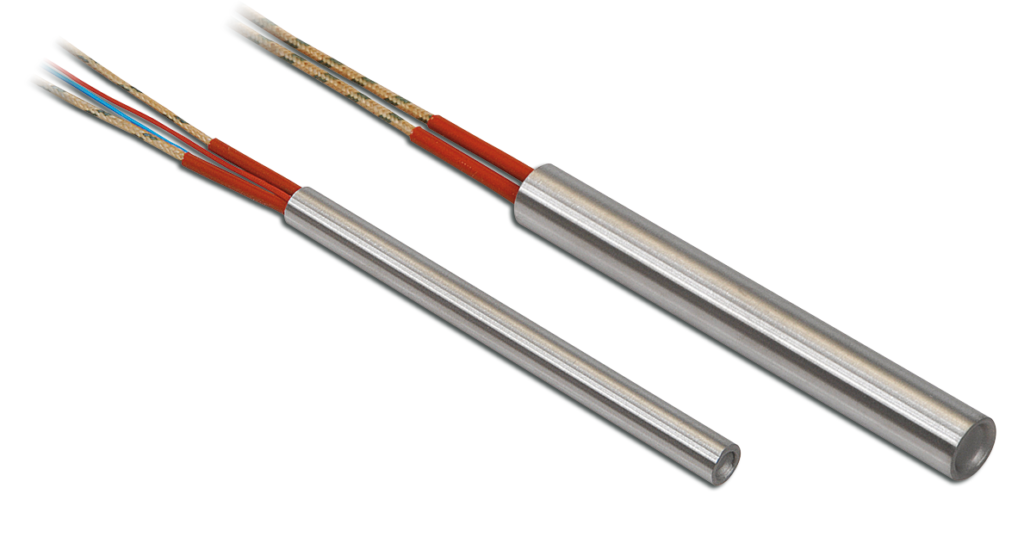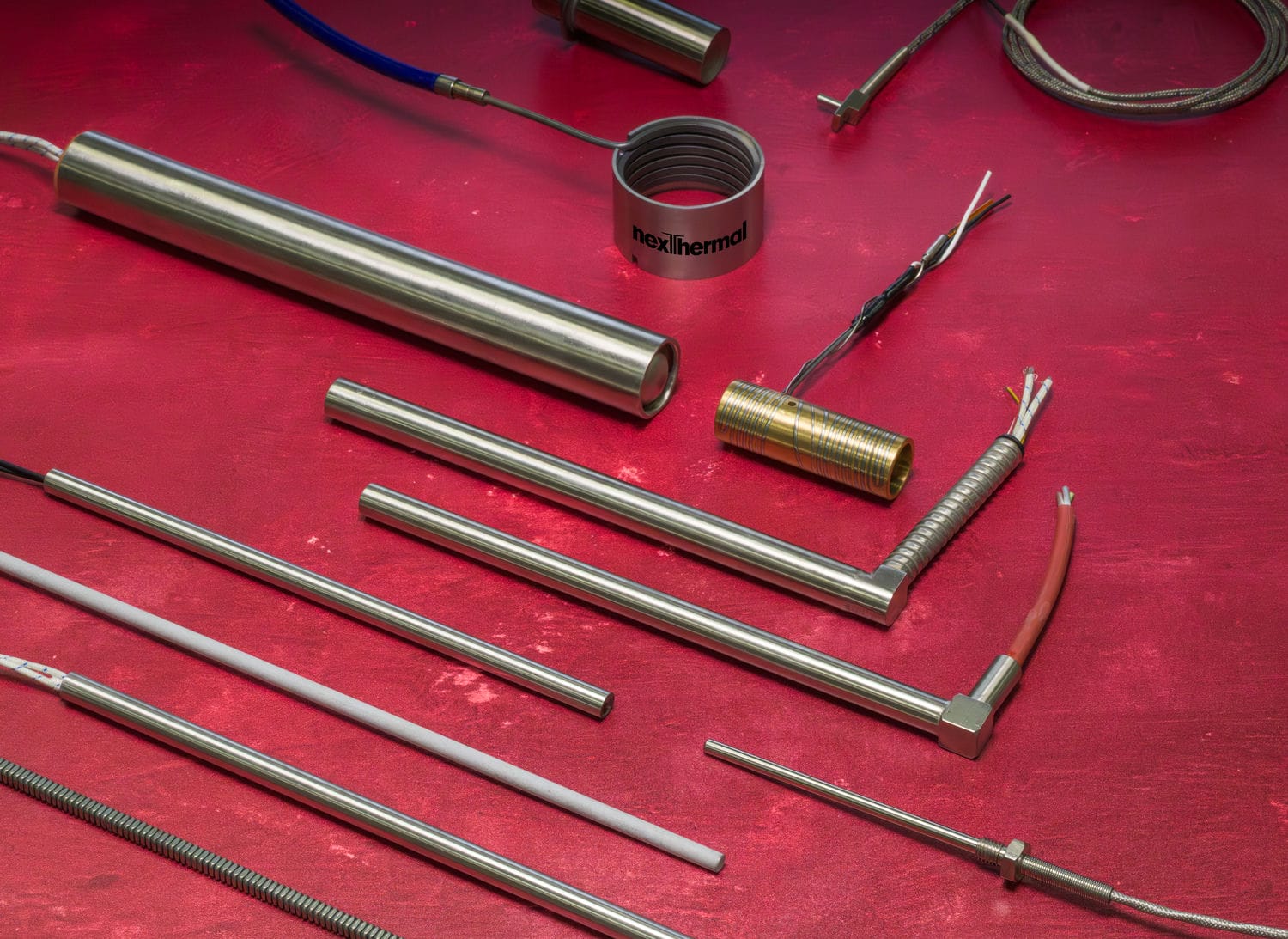What are Cartridge Heaters?
Industrial heaters convert the energy from a source (fuel or energy) to thermal energy in a system or closed environment. They transfer heat through the convection, conduction and radiant method. Tubular heaters, duct heaters, flexible heaters, and rod heaters are some types of industrial heaters.
A cartridge heater is an industrial heating element that can be inserted into drilled holes (bores). It is made up of a resistance wire wound around a ceramic core that is surrounded by a dielectric material and covered within a metal sheath. The powered heat is transferred through the coil to the sheath. This causes the sheath to heat up. The heat is then transferred to the tool.
The gap between the heater and the bore is crucial when it is at a high temperatures. The gap should be according to Nexthermal’s recommendation. Cartridge heaters are available in two different watt density builds – medium and high. They can withstand a working temperature up to 1400° F.
Cartridge heaters are also called insertion heaters. They are used in heating presses, plates, molds, packaging jaws, top seal packaging, gasses and liquids, hot stamping, laminating presses, medical equipment, scientific equipment, plastic molding, and many other applications.
How do I Choose a Cartridge Heater?
Selecting a cartridge heater depends on its application. Before choosing a cartridge heater, one needs to check the following:
- Power needed to heat the mass and to maintain the operating temperature
- Temperature needed to be heated at
- Heating time
- Diameter of the hole with tolerance
Why Do Cartridge Heaters Fail?
- Improper fit
The most common reason for a cartridge heater to fail is improper fitting into the bores where it is inserted. The heater is unable to effectively transfer the heat that is generated, thus causing the heater temperature to rise and eventually leading to the resistance wires to break down. Preferably the heater should fit snugly into the hole. This minimizes air gaps and allows heat to be transferred efficiently. The recommended gap based on the watt density of the heater and the application temperature should be between 0.0008 inches to 0.004 inches.
- Moisture / humidity
Outside contamination caused by moisture, oil or gas can be pulled into the heater which will cause a short circuit resulting in heater failure. Engaging a cartridge heater with adequate seals like epoxy potting is one way to deal with this issue.
- Too high of a watt density for the application
Depending on the application, if the watt density is too high, this will cause premature failure due to lack of efficient heat transfer.
- Incorrect voltage
All cartridge heaters are designed to work at a specific voltage. The wattage of any electric heater is proportional to its voltage squared. When a 120-volt heater is switched to 240 volts, its wattage increases by four times. This might lead to too much voltage applied which will result in heater failure.
- High temperatures and excessive movements of the lead wire
Cartridge heaters’ leads are prone to damage from high temperatures and excessive movements. Therefore, it becomes critical to select a heater with correct lead insulation for high temperature. When installed on moving machinery, the correct lead wire with insulation and adequate stress relief should be considered. Nexthermal gives different options for your specific application. An example might be for a moving packaging machine to have Teflon leads and either Silicone potting or epoxy potting for the seal depending on operating temperatures.
How to Prevent Cartridge Heater Failure?












